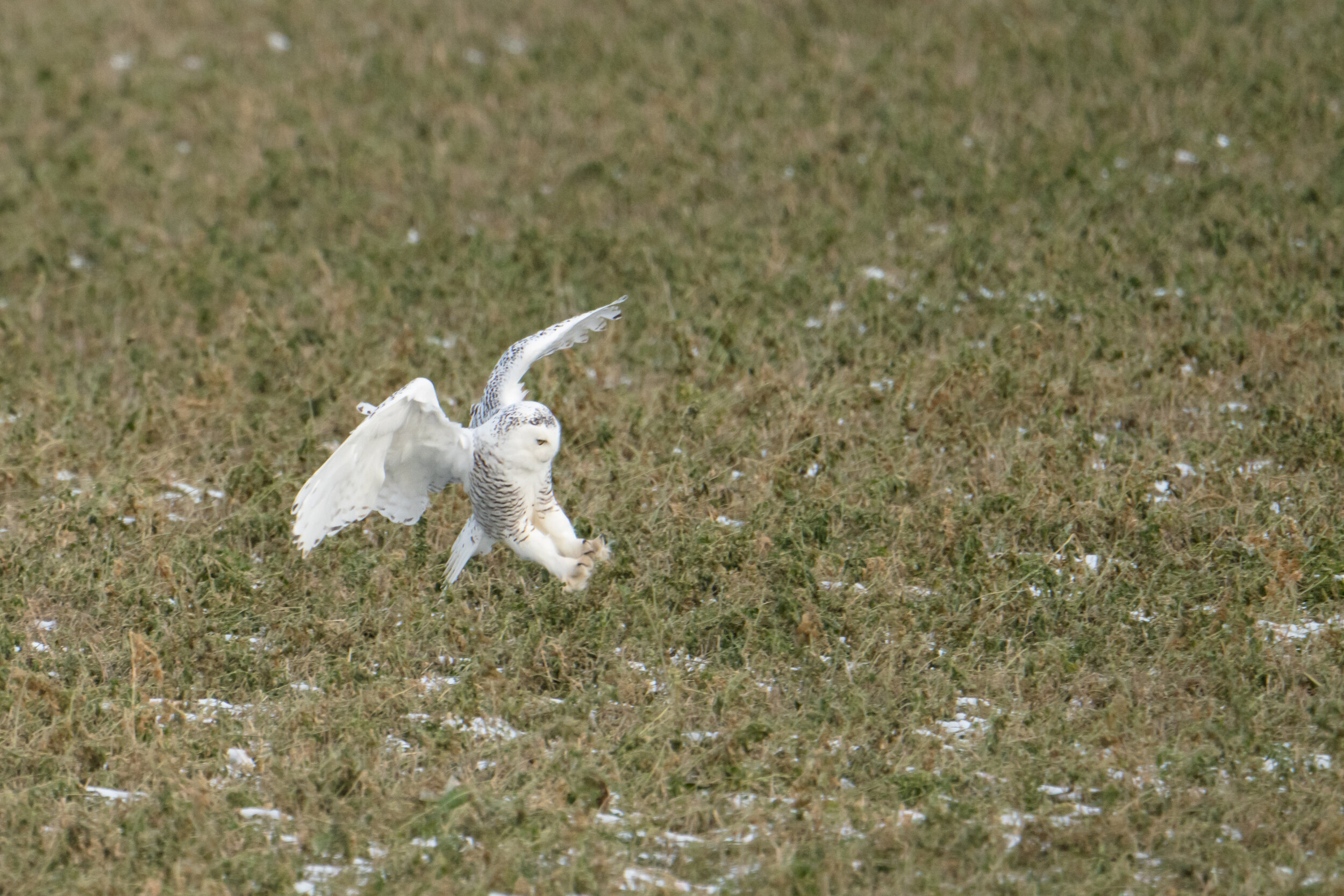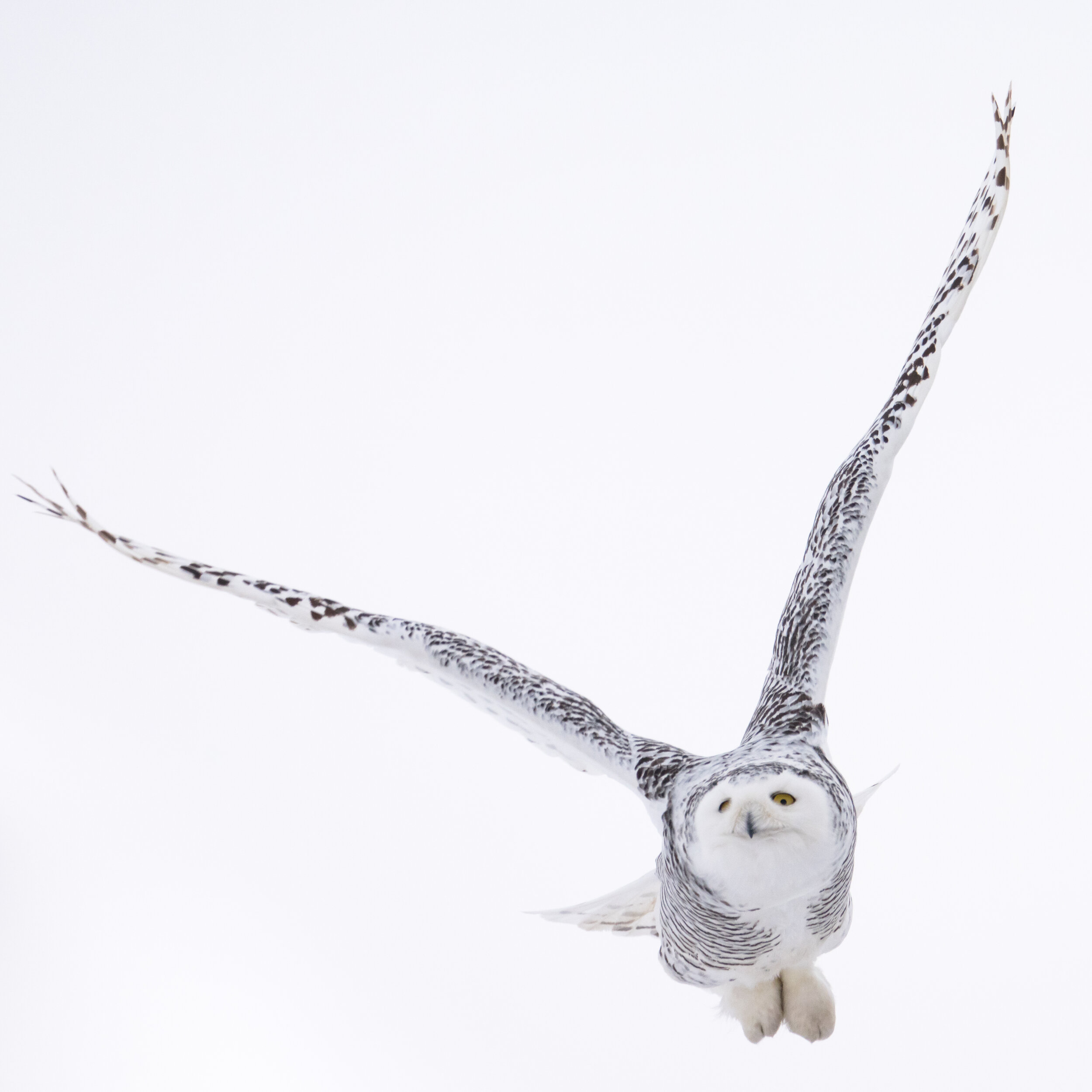I haven’t really purchased a lot of camera gear in the last year, mostly due to two factors.
First, I really have most of what I need for the types of shooting I regularly do. In fact I have most of it in both Canon and Sony. At this point I don’t “need” anything, but that doesn’t mean I still don’t keep an eye on what is coming out that might make it easier to do the photography that I like.
Shooting with the new Sony 200-600 on Malcolm Island, BC. Picture credit to Salwa Farah (WanderingPhocus.com)
Second, there hasn’t been much interesting new gear in the last year for me. On the Canon side, they haven’t come out with anything that would make me want to replace my 5DS, and the lenses I have are exactly what I need from 8mm all the way to 1000mm (500 f/4 and 2x). That may change if Canon finally starts to catch up to Sony in the mirrorless market but I can wait until they do. On the Sony side of the world, things have gotten a little slower or the stuff coming out is either out of my price range or not really the type of gear that I need at the moment.
There were, however, two exceptions and although I didn’t “need” them, I really did think they would be useful additions to my kit.
Sony A7RIV and FE 200-600 f/5.6-6.3
The Lens
First up was the Sony FE 200-600 G f5.6-6.3. I picked this lens up in the fall just in time for a trip out to Vancouver Island and it pretty quickly became my go to lens for nearly any nature shooting. Although this lens was not quite as sharp as the FE 100-400 GM, I almost never used that lens without the 1.4 teleconverter giving me a 140-560 but since I use it at 560 most of the time I was always at f/8 or slower. That lens is still very sharp with the teleconverter but not as sharp as the native 200-600. Like most nature photographers I rarely have enough length so this has been a fantastic addition to my gear bag.
thinkTANK backpack with Nature Quaternity - FE 16-35 f/4, Sony A7III with FE 24-104 f/4, FE 70-200 f/4, and Sony A7RIV with FE 200-600 f/5.6-6.3….1.4 teleconverter underneath for a travel kit from 16-840mm.
With this lens I went from the nature Trinity (16-35 f/4, 24-105 f/4, and 100-400 f/4-5.6) in my bag to now carrying more of a nature Quaternity in which I now carry the 70-200 f/4 that I often use for video work and the 200-600 in place of the 100-400. This now gives me a range of 16-840mm (since I do still carry a 1.4 teleconverter in the bag) all in one thinkTANK bag that I can carry on a plane and actually hike with….pretty useful.
Snowy Owl taking flight on a very cloudy day. Sony A7RIV and 200-600 + 1.4 teleconverter. 840mm, f/9, 1/3200s ISO800
I used this new lens mostly on the A7III, with the A7RII usually on the 16-35 for landscape shots. Great combo, 10 frames per second for fast moving subjects and nice resolution for things that weren’t moving quickly…or at all. Now what if I could have both of those in one camera? Never happen, you would think, or at least not with a good buffer. Well, Sony basically said “wait, hold my beer” and then popped back late in the year with the new A7RIV.
Snowy Owl landing in a grassy field. Sony A7RIV and 200-600 + 1.4 teleconverter. 840mm, f/9, 1/1000s ISO1600
The Camera
Now this may not be the dream camera for all nature photographers, but it has been what I have been looking for pretty much since I got hooked on the resolutions of both the A7RII and the Canon 5DS. Give me high resolution, the ability to crop in and still have enough for a relatively large print and also the ability to shoot fast burst with a pretty good buffer. At this point really the only thing missing is the A9 silent shooting (stacked sensor) and 20 or more fps on one of these high resolution machines….still something to look forward to in a couple of years.
So, just before the holidays I picked up the Sony A7RIV and actually got a break in the horrible weather to see a few owls. And as an added bonus, there was a sighting of a rare-to-the-area Northern Hawk Owl that was a particularly great test subject. With Salwa out with the 5DS and 500f/4 with teleconverter, we were able to check out both the quality of the two combos and compare the usability.
If you have read this far you will likely be interested in my impressions of this combo and comparisons with previous Sony gear that I currently have.
Snowy Owl resting on a weedy knoll. Sony A7RIV and 200-600 + 1.4 teleconverter. 840mm, f/9, 1/1000s ISO1600
Internally zooming lens
The 200-600 is a relatively slow lens with a maximum aperture of 5.6 at 200 to 6.3 at 600. This was a design choice made to allow for a relatively small and light zoom lens. The fact that they made this an internally zooming lens is one of my favorite features. The weight distribution doesn’t change noticeably as you zoom, and since the zoom throw is only about a quarter turn, the entire range of this lens is accessible with only a small wrist movement.
Portrait of a Northern Hawk Owl. Sony A7RIV and 200-600 + 1.4 teleconverter. 840mm, f/9, 1/2500s ISO800
The length and weight of this lens is easy to hand-hold (assuming you are used to using long telephoto lenses). It is definitely heavier than the 100-400 but still very manageable.
This lens is really sharp, not quite as sharp as the 100-400 but sharper than the 100-400 with the 1.4 teleconverter. The other bonus is that it is also pretty sharp at 840mm with the 1.4 teleconverter although you are now at f/9.
High Key image of a Northern Hawk Owl in flight. Sony A7RIV and 200-600 + 1.4 teleconverter. 370mm, f/8, 1/4000s ISO1600
Autofocus and Tracking
Autofocus on mirrorless cameras with long telephoto lenses was, up until very recently, not very good. The 100-400 on the third generation A7 cameras was really good, even in relatively low light. The A7RIV is even better and the 200-600 is also really quite fast. Tracking birds in flight on either of these lenses and the A7III or A7RIV is actually faster than any setup I have used…Sony or Canon. The biggest surprise is how well the autofocus works with the teleconverter. I really don’t feel much difference in speed or tracking even at low light and relatively low contrast. This was definitely where the A7RII was lacking with or without the teleconverter.
Young Male Snowy Owl. Sony A7RIV and 200-600 + 1.4 teleconverter. 840mm, f/9, 1/1250s ISO2000
The high resolution and telephoto power combo
The last big benefit of the high resolution/long telephoto combo is in the cropping. It doesn’t matter how much lens I have, I still cannot….or sometimes should not get closer to my subjects. With the A7III I can crop down for instagram or the web reasonably far and still have a usable image….although the noise becomes more noticeable with increased ISO. On the A7RIV a similar crop is still printable and I can now crop in considerably more….or just improve how the shot looks as I don’t always get the perfect framing on fast moving birds. Nice to be able to reframe and still have a shot that I can put on the wall. The other bonus is that a landscape shot can be made vertical or vice versa and still have enough resolution to print.
Cropped in on a Northern Hawk Owl trying to stash a vole in a tree. Sony A7RIV and 200-600 + 1.4 teleconverter. 840mm, f/9, 1/3200s ISO800
The A7RIV itself is another really good step in the evolution of these cameras. The grip is a bit more substantial. It feels a bit different from the third generation but I really don’t find one better or worse…just a bit different. The buttons are much better, easier to touch. The joystick is easy to use even with gloves on.
Snowy owl take off. Sony A7RIV and 200-600 + 1.4 teleconverter. 840mm, f/9, 1/1250s ISO2000
The resolution and speed of this camera are the real reasons I wanted it. They are also the real reason that it is the best camera I have ever used. In a previous article I pretty much asked for everything that I now have. I do find it interesting that Sony is the company that has produced it. As a long-time Canon user, I thought Canon would not only be the first to do many of these things. I thought they would be the ones innovating like they did when they came out with the 5D and 5DII. Let’s see how they respond as a new decade starts.












